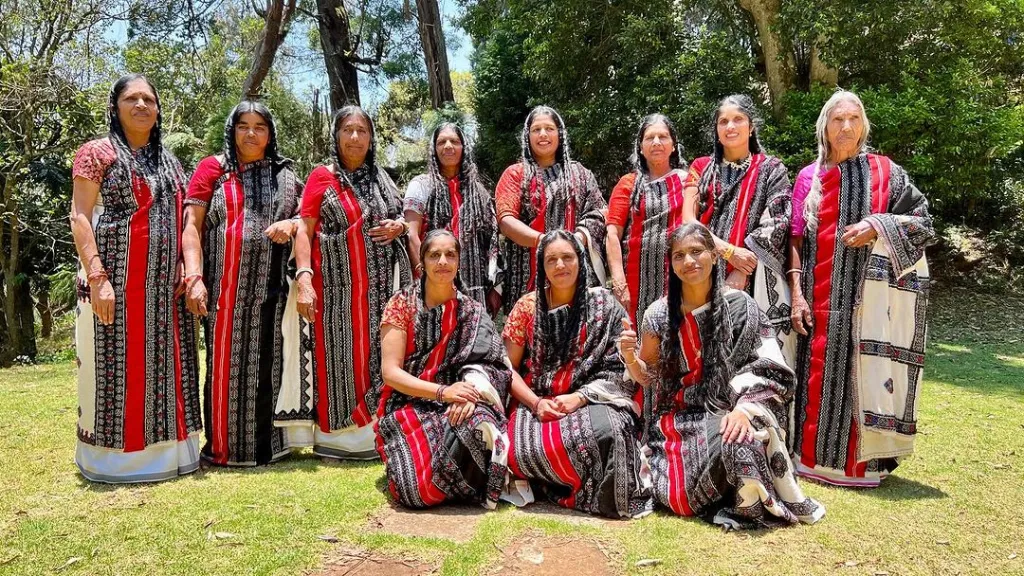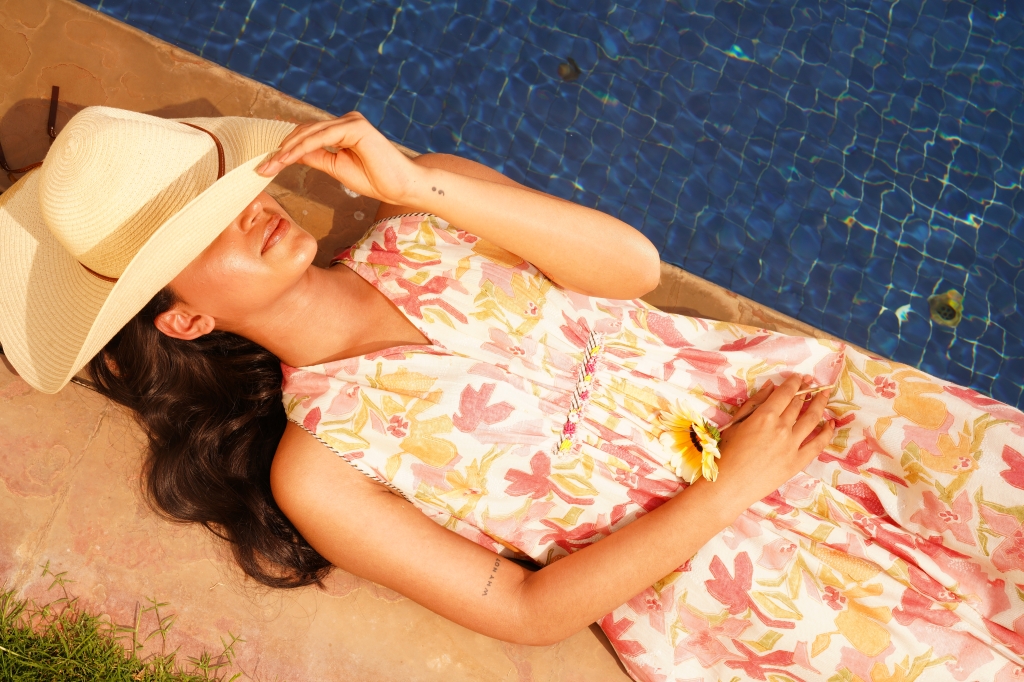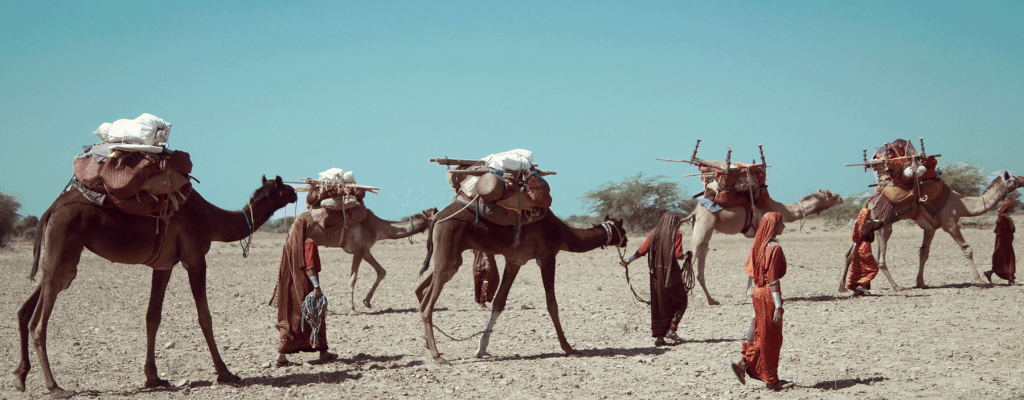Living Lightly: Journeys with Pastoralists is a special exhibition that is on at the Indira Gandhi National Center for the Arts, New Delhi till December 18th, 2016. Curated by Sushma Iyengar, it tells the story of pastoralism through craft, art, food, poetry and music. It creates a platform for intersection and interaction for pastoral communities from different parts of India. We visited the exhibition and spoke to some of the key people.
One of the first things that strikes you as you walk into the exhibition hall is a large installation with woven or block-printed screens that depict the changing lives of the pastoralists – the ajrakh textile’s journey from being made only for the Maldharis (herders) to now making an appearance on the ramps in Milan, the stories of the vankars who made dhablos and pachedis for the pastoralist Rabaris and now have to find new markets for their products.
(Installations depicting the changing lives (Left) and symbiotic relationships (Right) of pastoralists)
And that is the essence of the entire exhibition – it evokes these old relationships and their changing face. Curated by social activist Sushma Iyengar and textile and arts expert Carol Douglas, the exhibit is powered by passionate volunteers like researchers Srishti Verma and Paresh Bhai of Khamir. They tell us about critical elements of pastoralist living like hatar, the symbiotic relationship the Maldharis have with the Meghwals – traditional leather workers who made shoes for the former in exchange for the right to skin their dead livestock. They tell us how these relationships are changing and what impact it has on their way of life.
Among Dastangoi sessions, a film on the pastoralists, camel milk cheese making and split-ply braiding workshops, the exhibit also showcases the rich repertoire of crafts from these communities and were the currency of the pastoralists’ micro-economy.
(Left to Right: A camel cheese maker and children at a workshop)
Iyengar says, “There are a lot of invisible people and voices in our society and pastoralists are one of them. My hope with this exhibit is that we begin to appreciate why this community of 34 million people is constantly on the move and are able to understand how their constant movement actually helps to regenerate our ecosystem. And once we begin to value it, we finally can begin working towards preserving it.”
(Clockwise from left: The crafts and products of the pastoralist communities on display; exhibition curator Sushma Iyengar)
The exhibit also has workshops for children and young adults to introduce them to the pastoralist lives and help them understand their role and importance. Bhavana Jaimini, who facilitates these sessions tells us that most kids were aware that pastoralists exist and were interested in understanding their lifestyle. A hopeful note, that one, it tells us that there is always hope in the seemingly bleak future and as always it comes from the next generation. Step into this other world through the Living Lightly exhibit, take the kids with you, and get acquainted with a whole other world living right alongside us.












Leave a comment